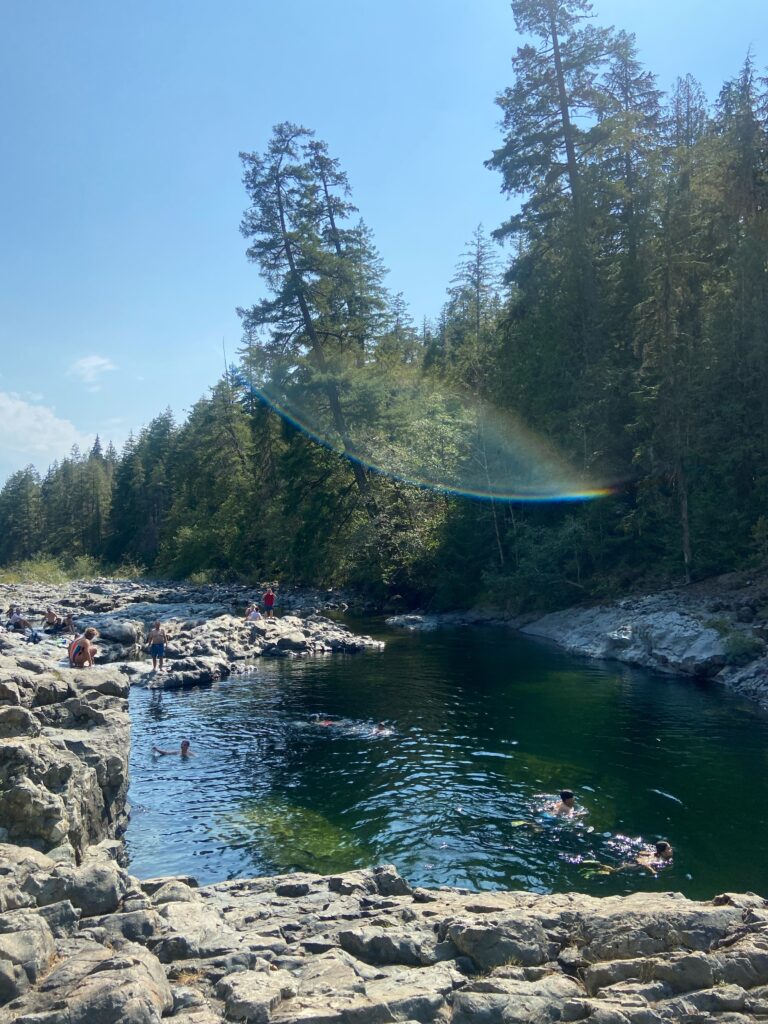What is a digital identity?
Your digital identity is made up of the content you produce and publish across social media platforms, how you interact with people, how you utilize technology for personal benefit, how you educate yourself and others, how you learn, and how you work. This is your digital identity (What is Digital Identity?, Eric Stoller, 2016). What a person curates and posts online accounts as an additional portion of their identity. Your digital identity is your footprint on the web; every step you take online represents this digital identity. Within my personal learning network group, we spoke about the guidelines for a digital identity, how it’s defined, and what constitutes as controlled vs uncontrolled media. Personally, I identified a form of my own controlled media as my personal Instagram page — where I post personal pictures to friends I personally know. This is a raw reflection of my personal identity in an online form. On the other hand, an example of uncontrolled media I identified was the sociology course union Instagram I run, in which I post information about upcoming events. These are thus screenshotted and reposted, making the content I once posted now in the hands of others to control. This exercise with my peers helped me to realize the level of free rein on the web, and made me question the degree of the things I share on the internet are controlled versus uncontrolled.
How do personal versus professional approaches to digital identity affect social media use?
The way a personal versus professional approach to digital identity affects social media use differs based on the intention it is used for and what would be posted on it. In simpler words, a person might not be inclined to post what they normally would on their personal account, than they would onto their professional display. Like the Jawed et al. article mentions, an example would be medical students, in which they communicate on social media through professional ways (Digital professional identity: Dear Internet! Who am I?, 2019). This further made me think of what Eric Stoller mentioned briefly about our digital identity acting as a pre-interview in creating, designing, and showcasing who we are (What is Digital Identity?, 2016). Therefore, someone pursuing medical school or is looking for a job in the medical field would most likely not intersect their personal and professional digital identity together, as a diminished career could easily become the result. Additionally, the way you interact on personal social networks differs from the way you do on professional social networks. One might be more relaxed with what they post on their personal networks, whereas you might think twice about it professionally. For example, take into account the uses of Facebook versus LinkedIn. Facebook is where you would post personal things to a network of people (your family/friends etc.), and LinkedIn is where you post about your experiences and accomplishments. Although you have connections to networks in both approaches through connections, values, and interests, the way you share elements of your identity differs. You would not post what restaurant you’re eating at on LinkedIn, just how you would not usually post about your last job description on your Facebook account.
How do digital identities converge in networked publics – what are the impacts and/or benefits?
We have access to an enormous world of information on the internet, where there are countless opportunities for learning. As we use our digital identities to create presence and voice, it also enables us to establish ideas and educate ourselves on specific subjects. I was able to recognise the significance of digital identity in the field of politics from the video ‘Press Conference The Value of Digital Identity for the Global Economy and Society, Davos, 2019’ and how it has aided in increasing social and political inclusion because more information is now accessible online. Additionally, how the protection of rights have become more available through digital identities. The ways digital identities thus converge in networked publics would be through leisure spaces. People incorporate their digital identities into various social networks, which causes the formation of online communities. These social networks serve as a space for creating a sense of association, community, and commonality (Identity Making and Social Media). To expand, people identify and thus use the internet as a foundational way of creating networks with people who share similar values, interests, and beliefs. Ultimately, the way we combine and harmonize our digital identity with social networks has evidently proved its existence in leisure spaces. Thus, we depend on these spaces to encourage social interaction, community building, and the development of a sense of identity.
References
Digital professional identity: Dear Internet! Who am I? Jawed S, Mahboob U, Yasmeen R – Educ Health
Identity-Making and Social Media
Press Conference The Value of Digital Identity for the Global Economy and Society, Davos 2019
